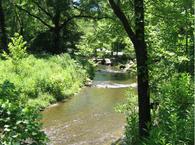
For the first part of this blog series, see Fly Fishing With Nymphs.1 - Clingers.
For the second part of this blog series, see Fly Fishing With Nymphs.2 - Swimmers.
For the third part of this blog series, see Fly Fishing With Nymphs 3 - Crawlers
First, as with all flies, use patterns that specifically mimic actual insects, such as our Perfect Fly brand of flies. For example, clinger, swimmer, and crawler, nymphs all have different body shapes. Also, because nymphs are under water, the trout can get a much better view of the fly than a dun, which resides on the surface. Consequently, generic nymph flies will not fool as many trout, and therefore represent a false economy. Saving a few dollars on some flies versus the total cost of a fishing trip probably doesn't make sense.
When fishing nymphs, understand that the nymphs are almost inevitably going to be on (or very near) the bottom of the stream. The exception to this is the nymphs that are getting ready to “hatch”. (Note that what most anglers call a hatch is actually the point at which a nymph transforms into an adult fly. There is no actual hatching that occurs at this point.) This is because nymphs tend to stay very much hidden under rocks, etc., except around the time of the hatch, when they become more active. (The good news is that even in winter there are hatches of midges and winter stoneflies.)
Therefore, you should always be sure your nymph fly is gently drifting along the bottom of the stream, not drifting up in the water column or hanging up on the bottom. (A main exception, of course, is the swimmer nymphs.) You will need to continually adjust the weight (and location of your strike indicator, if necessary) on your line to accomplish this. Also, this suggests that you will catch more trout if you fish the nymphs of the insects that are about to “hatch”, just as much or more than you fish the dry flies that mimic the adult stage of the insects that are “hatching” now. So, dust off that hatch chart and check out what's about to “hatch.”
Another key tactic is to fish the flies in the same type of water in which the actual insects are found. For example, you don't want to fish a fly that imitates a swimmer nymph in fast water, because that type of nymph would rarely, if ever, be found in swift current.
Also, be sure to check out our class on nymphing, based on the techniques used by master nympher, George Daniel.





